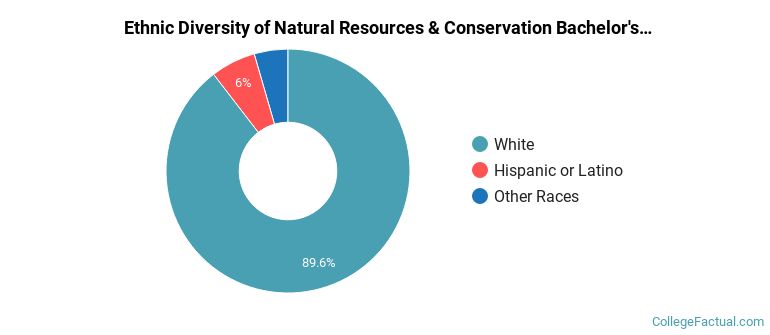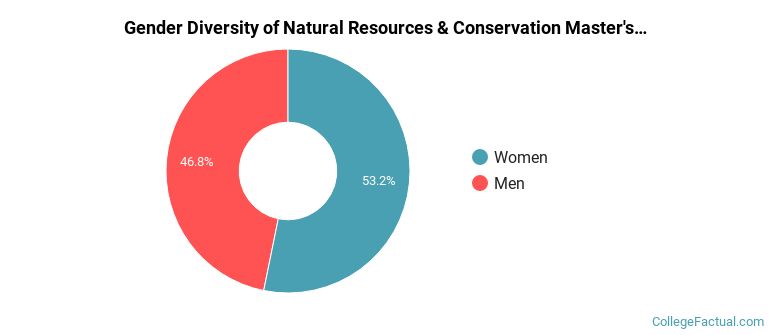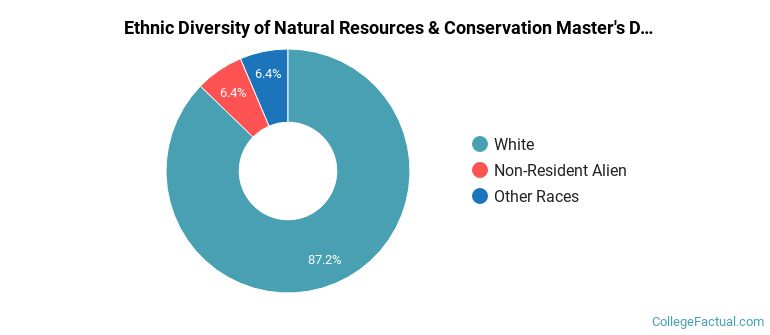 by our College Data Analytics Team
by our College Data Analytics TeamJump to any of the following sections:
The bachelor's program at Clemson was ranked #85 on College Factual's Best Schools for natural resources & conservation list. It is also ranked #1 in South Carolina.
During the 2021-2022 academic year, Clemson University handed out 67 bachelor's degrees in natural resources & conservation. This is an increase of 14% over the previous year when 59 degrees were handed out.
In 2022, 52 students received their master’s degree in natural resources & conservation from Clemson. This makes it the #21 most popular school for natural resources & conservation master’s degree candidates in the country.
In addition, 2 students received their doctoral degrees in natural resources & conservation in 2022, making the school the #71 most popular school in the United States for this category of students.
During the 2022-2023 academic year, part-time undergraduate students at Clemson paid an average of $1,695 per credit hour if they came to the school from out-of-state. In-state students paid a discounted rate of $654 per credit hour. The average full-time tuition and fees for undergraduates are shown in the table below.
| In State | Out of State | |
|---|---|---|
| Tuition | $14,038 | $37,982 |
| Fees | $1,516 | $1,516 |
| Books and Supplies | $1,436 | $1,436 |
| On Campus Room and Board | $12,872 | $12,872 |
| On Campus Other Expenses | $5,476 | $5,476 |
Learn more about Clemson tuition and fees.
In the 2021-2022 academic year, 67 students earned a bachelor's degree in natural resources & conservation from Clemson. About 40% of these graduates were women and the other 60% were men.

The majority of bachelor's degree recipients in this major at Clemson are white. In the most recent graduating class for which data is available, 90% of students fell into this category.
The following table and chart show the ethnic background for students who recently graduated from Clemson University with a bachelor's in natural resources & conservation.

| Ethnic Background | Number of Students |
|---|---|
| Asian | 0 |
| Black or African American | 0 |
| Hispanic or Latino | 4 |
| White | 60 |
| Non-Resident Aliens | 0 |
| Other Races | 3 |
Clemson does not offer an online option for its natural resources & conservation bachelor’s degree program at this time. To see if the school offers distance learning options in other areas, visit the Clemson Online Learning page.
The natural resources & conservation program at Clemson awarded 47 master's degrees in 2021-2022. About 47% of these degrees went to men with the other 53% going to women.

The majority of master's degree recipients in this major at Clemson are white. In the most recent graduating class for which data is available, 87% of students fell into this category.
The following table and chart show the ethnic background for students who recently graduated from Clemson University with a master's in natural resources & conservation.

| Ethnic Background | Number of Students |
|---|---|
| Asian | 0 |
| Black or African American | 0 |
| Hispanic or Latino | 0 |
| White | 41 |
| Non-Resident Aliens | 3 |
| Other Races | 3 |
Take a look at the following statistics related to the make-up of the natural resources & conservation majors at Clemson University.
Natural Resources & Conservation students may decide to major in one of the following focus areas. Individual majors may not be available for all degree levels.
| Major | Annual Graduates |
|---|---|
| Forestry | 43 |
| Wildlife Management | 40 |
| Natural Resources Conservation | 35 |
| Related Major | Annual Graduates |
|---|---|
| Engineering | 1,474 |
| Biological & Biomedical Sciences | 575 |
| Agriculture & Agriculture Operations | 340 |
| Architecture & Related Services | 185 |
| Engineering Technologies | 151 |
More about our data sources and methodologies.